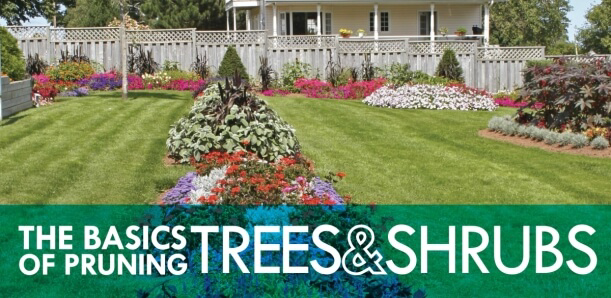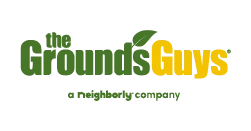The Basics of Pruning Trees & Shrubs

Don't shy away from pruning trees and shrubs because you don't have the knowledge or the confidence to make the first cut. Armed with the right tools and techniques, you'll be able to improve your plants' health, keep them tidy and help them produce flowers and fruit. The Grounds Guys® can help equip you with the basics so you're pruning like a pro in no time. Unless you're using a creative technique -- sculpting topiaries or training espaliered plants -- pruning trees and shrubs should enhance the natural shape of plants instead of distorting them. Steer away from improper techniques or you can unknowingly compromise the health of your plants. And if a plant is severely compromised, it can die.
Pruning Trees
IMPROPER TECHNIQUES
- Timing. Prune trees at the proper time of year. Most trees benefit from dormant-season pruning, which means during cold-weather seasons. For deciduous trees, dormant-season pruning makes shaping a tree easier because you can see the tree's structure better after its leaves drop. Pruning deciduous or evergreen trees while they're dormant reduces the amount of sap that flows from pruning wounds. Don't try to seal wounds to stop the sap flow; trees have the ability to heal the wounds themselves, which is healthier for them.
- Topping. Reducing a tree's height by cutting all the vertical limbs at the same height inevitably leads to a bigger problem down the road. If you're trying to clear overhead power lines, pruning trees by topping may be the only solution, but in other cases, this is a practice to avoid. Topping causes a profusion of small branches to grow, but they develop weakly and are susceptible to falling as they get larger. So if you top your trees, they'll end up requiring labor-intensive continued maintenance.
- Tipping. Reducing a tree's width by cutting all the lateral limbs causes a profusion of new growth at the tips of these limbs. Over time, this new growth adds too much weight, which causes many branches to break.
PROPER TECHNIQUES
- The Three Ds. Remove dead, damaged and diseased limbs. Dead limbs are easy to identify; simply prune them back to the trunk. Storms or high winds can damage limbs by splitting or shredding them, leaving them hanging from a tree. Prune these branches below the damaged area. Likewise, prune any diseased limbs below the damaged area -- at least 12 inches toward the trunk.
- Inward growth and crossing branches. Remove all branches that grow inward or cross each other. These branches not only distort the natural shape of a tree, but they can rub against other branches or limbs, which creates open wounds that invite insects and diseases.
- Leave the collar. If you prune branches back to the trunk, cut them just outside the collar, which is the thickened area next to the trunk.
Pruning Shrubs
- Flowering Shrubs. Know when to prune so you don't remove the developing flower buds. Typically, prune most shrubs after they bloom.
- Maintenance Pruning. To shape your shrubs, prune them slightly wider at the base than at the top to allow light to reach the lower branches.
- Rejuvenation Pruning. If your shrubs are old or overgrown, prune them into shape over a three-year period. The first year, remove one-third of the oldest stems to the ground. The second year, remove one-third of the older stems that are left. And the third year, remove the remaining old stems.
A word of caution: Pruning trees can be dangerous, particularly large ones. When the job is too big (or dangerous) for you to handle, don't take a chance. Call the professionals at The Grounds Guys to help.
 Click to call
Click to call


